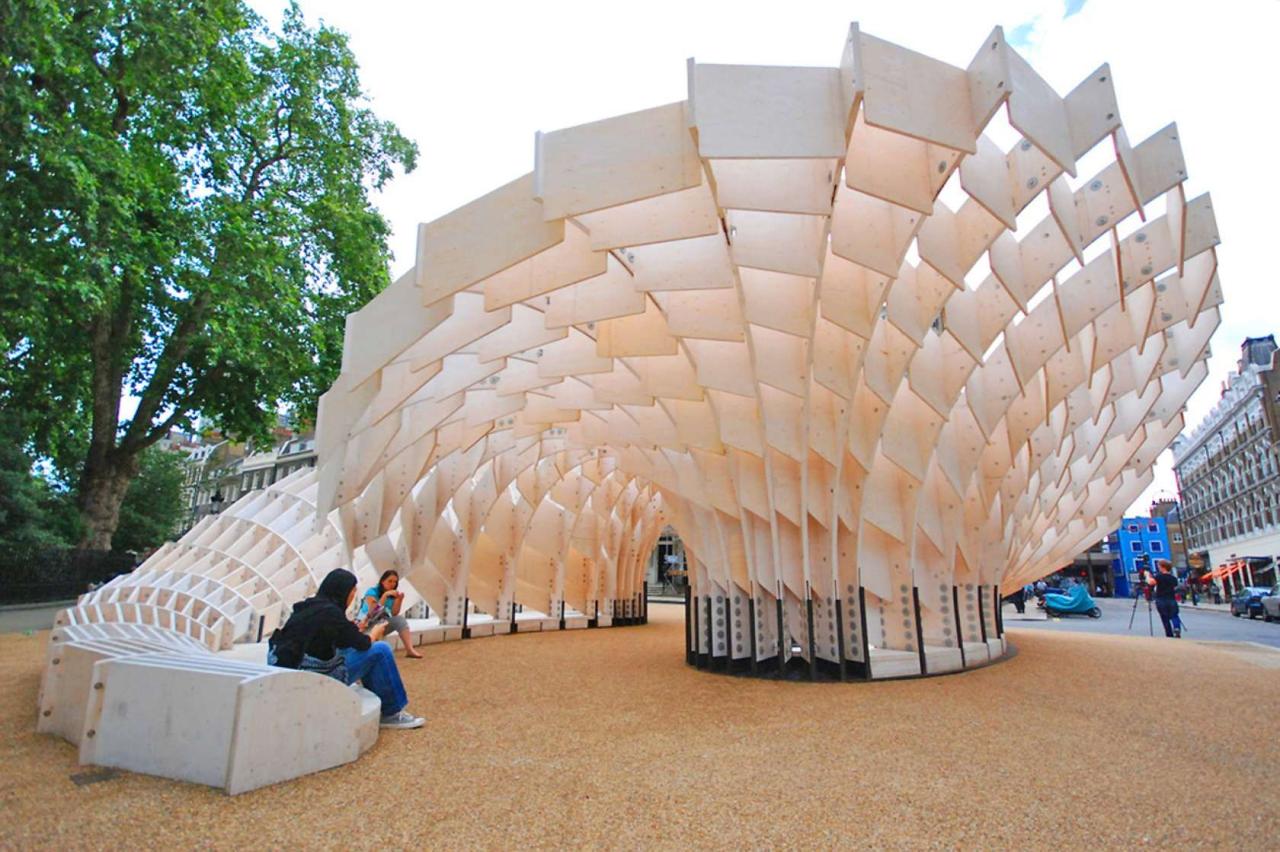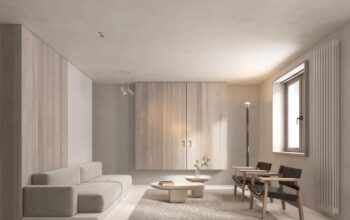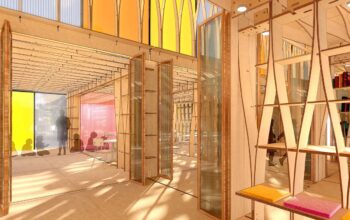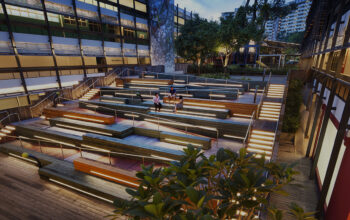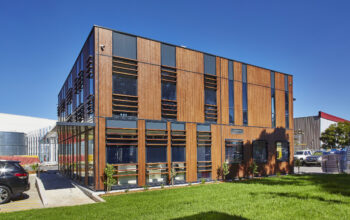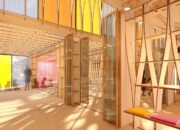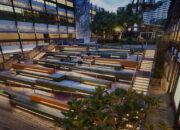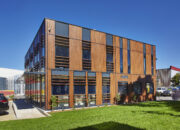In the dynamic realm of contemporary architecture, few phenomena captivate the public imagination quite like temporary pavilions. These ephemeral structures, designed for a limited lifespan, transcend their provisional nature to become celebrated icons of design innovation, cultural expression, and public engagement. Far from mere functional shelters, temporary pavilions serve as laboratories for architectural experimentation, platforms for artistic spectacle, and vibrant social condensers that breathe new life into urban and natural landscapes. Their allure lies precisely in their transience – a fleeting moment of architectural brilliance that invites immediate interaction and leaves a lasting impression.
This exploration delves into the captivating world of temporary pavilions, examining their diverse typologies, the profound purposes they serve, the ingenious design principles that underpin their creation, and the significant impact they exert on both the architectural discourse and the broader public realm. From the prestigious annual installations to grassroots community initiatives, temporary pavilions are redefining our understanding of what architecture can be.
What Makes a Temporary Pavilion?
At its essence, a temporary pavilion is a structure designed to exist for a defined, limited period, often ranging from a few weeks to several months, or even a year or two. Unlike permanent buildings, their conception is intrinsically linked to their impermanence, influencing every aspect of their design, construction, and eventual deconstruction or relocation. Key characteristics that define them include:
A. Finite Lifespan: This is the most crucial defining feature. Pavilions are built for specific events, seasons, or experimental purposes, with a clear plan for their removal or adaptation after their designated period. This constraint often liberates designers from the long-term maintenance and durability concerns inherent in permanent structures, allowing for greater creative freedom.
B. Flexibility and Adaptability: Many temporary pavilions are designed to be easily assembled, disassembled, and, in some cases, reassembled in new locations. This inherent flexibility allows them to respond to changing needs, contexts, and programmatic requirements. Their components are often modular or prefabricated, streamlining the construction process.
C. Experiential Focus: While they may serve practical functions, the primary goal of many pavilions is to create a unique and memorable experience for visitors. They often prioritize sensory engagement, spatial surprise, and interactive elements, aiming to provoke thought, inspire wonder, or facilitate novel social interactions.
D. Site-Specificity (Often): While some are designed for relocation, many prominent pavilions are site-specific, responding directly to their immediate context, whether it’s an urban park, a historic landmark, or a natural landscape. This contextual responsiveness often enhances their ability to captivate and integrate meaningfully, albeit temporarily, with their surroundings.
E. Exploration of Form, Material, and Technology: Due to their temporary nature, pavilions often become testing grounds for innovative structural systems, unconventional materials, and cutting-edge digital fabrication techniques. They allow architects to push boundaries without the long-term risks associated with permanent construction.
Why Build Temporary Pavilions?
The motivations behind commissioning and constructing temporary pavilions are as varied as their designs, encompassing cultural, social, and architectural objectives:
A. Architectural Experimentation and Innovation: Pavilions offer a unique low-risk, high-impact platform for architects to experiment with new forms, structural typologies, material applications, and digital design tools. They allow designers to test bold ideas that might be too risky or expensive for a permanent commission, pushing the boundaries of what is architecturally possible. The Serpentine Pavilion, for example, is famous for showcasing speculative and innovative designs by world-renowned architects.
B. Public Engagement and Accessibility: Many pavilions are designed as public art installations or community spaces, inviting broad public interaction. They make high-calibre architecture accessible to a wider audience who might not typically visit galleries or museums, democratizing architectural experiences. These structures often become popular gathering points, photo opportunities, and venues for cultural events, fostering a sense of civic pride and shared experience.
C. Brand Promotion and Cultural Events: For institutions, cities, or commercial brands, pavilions can serve as powerful marketing tools or iconic symbols for major events like Olympic Games, World Expos, or international art biennials. They generate significant media attention, enhance a brand’s image, and create memorable associations for visitors.
D. Urban Revitalization and Placemaking: Placing a temporary pavilion in an underutilized or neglected urban space can dramatically transform its character. These structures can act as catalysts for urban revitalization, drawing people to areas that were previously overlooked, demonstrating potential for future development, and fostering new patterns of social interaction. They can create a temporary “sense of place” that encourages further investment or community initiatives.
E. Testing Concepts for Permanent Development: In some cases, a temporary pavilion might serve as a prototype for a more permanent structure or urban intervention. It allows designers and developers to gauge public reaction, test functionality, and refine concepts before committing to a long-term investment. This “try before you buy” approach minimizes risk and maximizes the potential for success.
F. Artistic Expression and Interdisciplinary Collaboration: Pavilions often blur the lines between architecture, art, and sculpture. They provide a canvas for architects to express conceptual ideas, engage with artistic themes, and collaborate with artists, engineers, and other creatives, resulting in truly interdisciplinary works.
The Art of the Impermanent
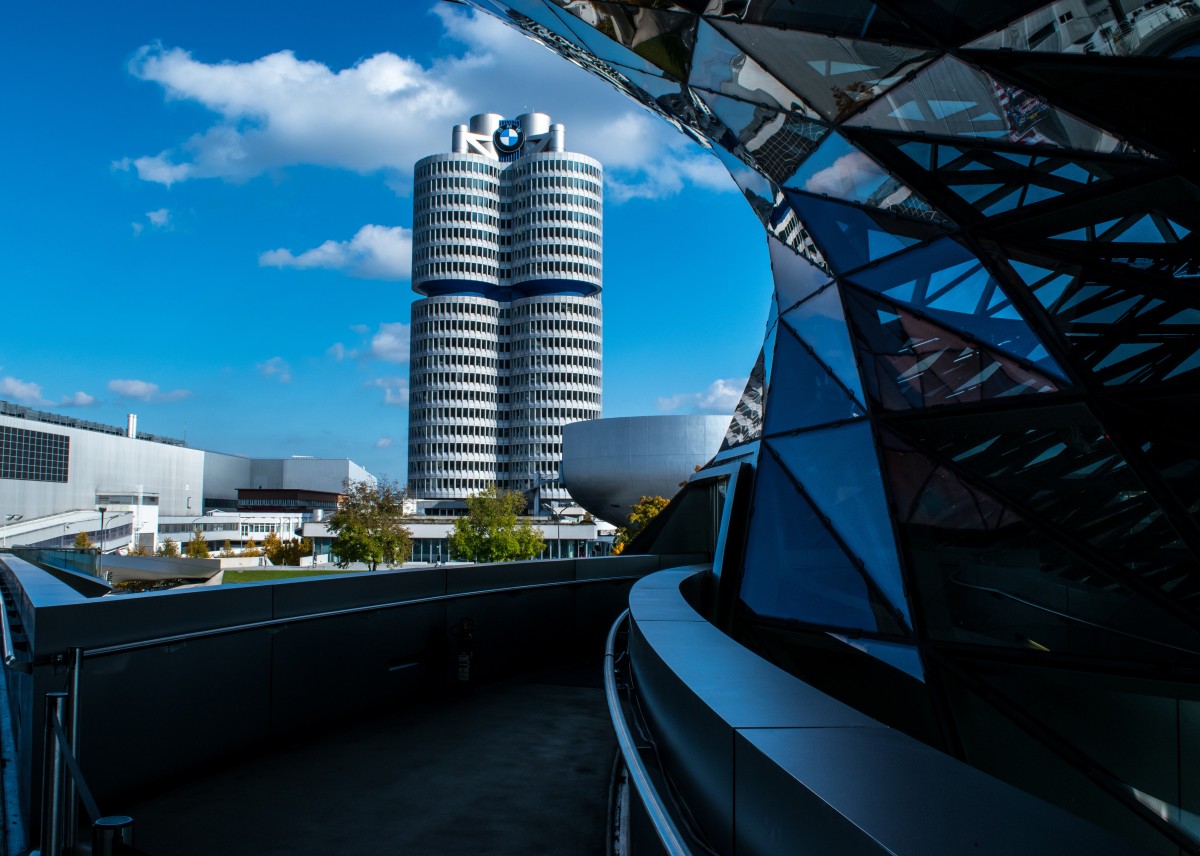
Designing a successful temporary pavilion requires a unique set of considerations that balance aesthetic ambition with practical realities of transience:
A. Structural Efficiency and Lightweight Design: Given the need for ease of assembly, disassembly, and often transport, structural efficiency is paramount. Designers often employ lightweight materials, tensile structures, inflatable elements, or modular systems that can be erected and dismantled rapidly with minimal labor and heavy machinery. This also reduces the foundation requirements, making them less impactful on the site.
B. Material Innovation and Sustainability: The temporary nature of pavilions sparks innovation in material use. Architects experiment with new composites, recycled materials, sustainably sourced timber, and even biodegradable components. The challenge lies in designing for either complete reusability of components, efficient recycling, or minimal environmental impact upon disposal. Some pavilions are designed to be entirely carbon-neutral or to leave no trace after removal.
C. Speed of Construction and Deconstruction: The timeline for most pavilions is extremely tight. This necessitates highly efficient construction techniques, often relying on prefabrication, standardized connections, and simple assembly processes. Similarly, rapid deconstruction is crucial to minimize disruption and return the site to its original state or prepare it for subsequent use.
D. Portability and Reusability: Many pavilions are designed with the intention of being moved to new locations or having their components reused in future projects. This requires careful consideration of modularity, robust connection systems, and packaging strategies that facilitate efficient transportation and storage. The economic and environmental benefits of reusability are significant.
E. Contextual Responsiveness and Impact: While temporary, a pavilion must engage thoughtfully with its immediate environment. This can involve designing to complement existing architecture, to highlight natural features, or to create a strong contrast that provokes dialogue. Considerations for site access, public flow, and minimal ground disturbance are also vital.
F. Sensory Experience and User Interaction: Beyond visual aesthetics, effective pavilion design considers the full sensory experience. This includes how light interacts with materials, the acoustics within the space, the textures visitors encounter, and opportunities for physical interaction (e.g., climbing, sitting, passing through). The goal is to create an immersive and memorable journey for the visitor.
G. Security and Durability for Short-Term Use: Despite being temporary, pavilions must be safe and withstand the elements for their intended duration. This involves designing for wind loads, rainfall, and daily wear and tear from public interaction, all while maintaining their lightweight and flexible nature. Security measures for public access are also crucial.
Global Icons of Temporary Pavilions
The world has witnessed numerous iconic temporary pavilions that have pushed the boundaries of architecture and left an indelible mark on cultural landscapes:
A. The Serpentine Pavilion (London, UK): An annual commission by the Serpentine Gallery, this program invites a different world-renowned architect to design a temporary summer pavilion in Kensington Gardens. It has become a prestigious platform for architectural experimentation, featuring works by Zaha Hadid, Frank Gehry, SANAA, and Bjarke Ingels, among others. Each year’s pavilion generates immense critical and public interest.
B. The Barcelona Pavilion (Mies van der Rohe, 1929, recreated 1986): Originally the German Pavilion for the 1929 International Exposition, its simple, flowing spaces and luxurious materials revolutionized modern architecture. Though temporary, its significance led to its faithful reconstruction decades later, demonstrating the lasting impact of a temporary structure.
C. The Venice Architecture Biennale Pavilions (Various): While some national pavilions are permanent, many temporary installations are created within the Arsenale and Giardini for each Biennale, serving as critical responses to contemporary architectural themes and showcasing innovative ideas from around the globe.
D. The P.S.1 Warm Up Pavilions (New York, USA): MoMA PS1’s Young Architects Program commissions emerging architects to design a temporary outdoor installation that provides shade, seating, and water for its summer music series. These pavilions are known for their experimental forms and sustainable solutions, activating the museum’s courtyard.
E. World Expo Pavilions: Historically, World Expos have been fertile ground for temporary architectural marvels. Examples like Buckminster Fuller’s Biosphere in Montreal (Expo 67) or the Atomium in Brussels (Expo 58) were initially temporary but became permanent landmarks due to their groundbreaking design and popularity. More recently, pavilions at Expos in Shanghai, Milan, and Dubai continue this tradition of architectural spectacle.
F. Burning Man Festival Art Installations (Nevada, USA): While not traditional architecture, the massive, intricate, and often collaboratively built temporary structures at Burning Man demonstrate extreme forms of ephemeral design, built for a short-term, intensely experiential existence before being deconstructed or burned.
The Enduring Legacy of the Ephemeral
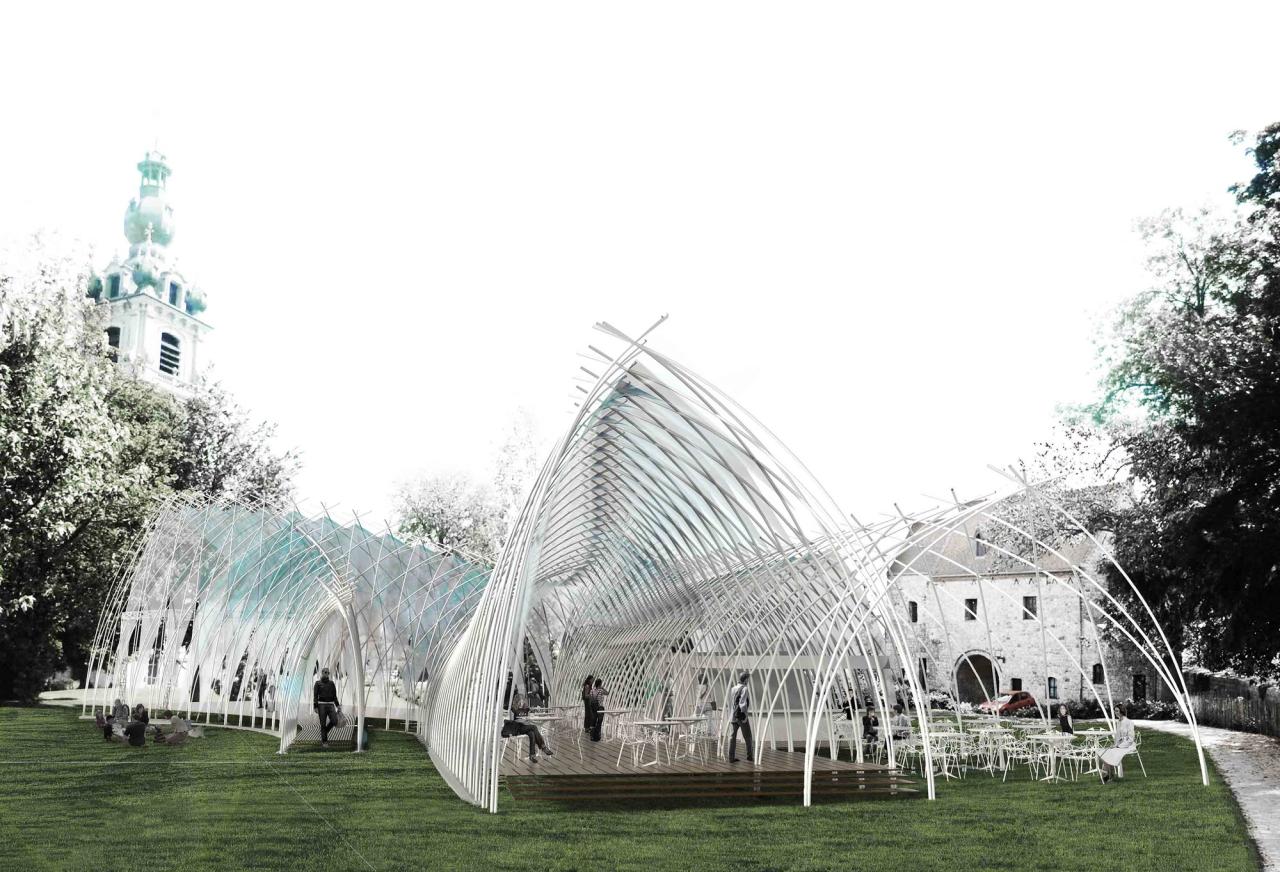
Despite their transient nature, temporary pavilions leave a powerful and enduring legacy, influencing architectural practice and public perception in several ways:
A. Incubation of New Ideas: They serve as vital incubators for innovative architectural concepts, materials, and technologies. Ideas tested in a pavilion often find their way into more permanent buildings, pushing the entire discipline forward.
B. Democratic Access to Architecture: By bringing high-quality, often avant-garde, architecture into public spaces, pavilions democratize access to design, making it a topic of broader conversation and appreciation.
C. Cultural Catalysts: They become significant cultural landmarks, even for a short time, drawing tourists, generating local economic activity, and fostering a sense of excitement and shared experience within communities.
D. Shifting Perceptions of “Permanence”: The success and impact of temporary pavilions challenge the traditional architectural emphasis on permanence, encouraging a greater appreciation for adaptability, sustainability, and the experiential qualities of space, regardless of its lifespan. They highlight that impact isn’t solely measured by longevity.
E. Sustainability Thought Leadership: The necessity of considering end-of-life scenarios for temporary structures drives innovation in sustainable design, material reuse, and waste reduction, setting precedents for more sustainable practices in permanent construction.
Conclusion
Temporary pavilions are far more than transient shelters; they are potent symbols of architectural dynamism, artistic freedom, and public engagement. Their ability to captivate stems from a delicate balance between innovative design, thoughtful material use, and their inherent impermanence, which imbues them with a unique sense of urgency and wonder.
By offering a platform for experimentation, fostering community interaction, and challenging conventional notions of permanence, these fleeting architectural marvels continue to enrich our urban landscapes and broaden our understanding of architecture’s expansive possibilities. As we look to the future, the captivating power of temporary pavilions will undoubtedly continue to inspire, provoke, and shape the way we think about the spaces we inhabit, however briefly.

